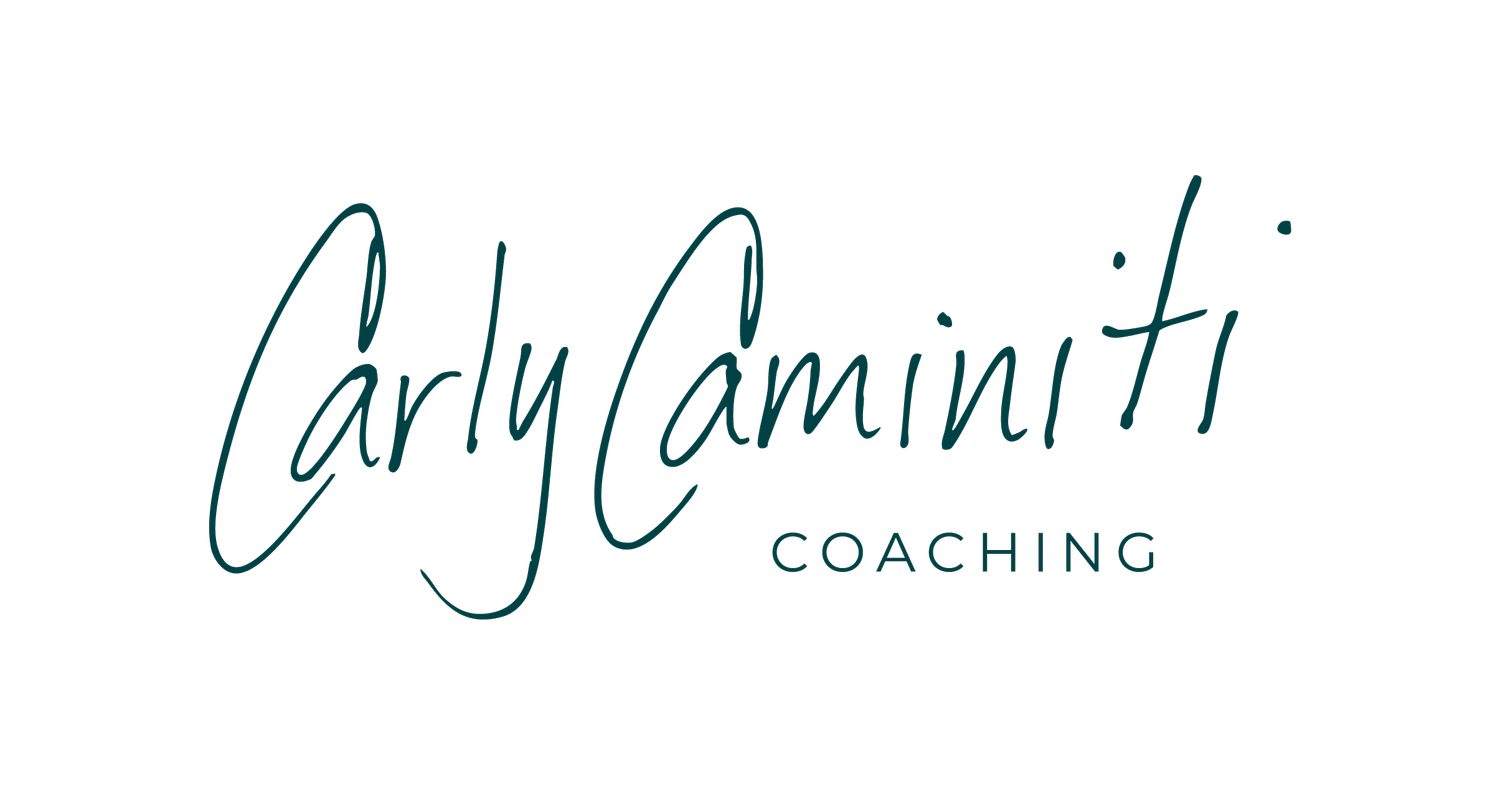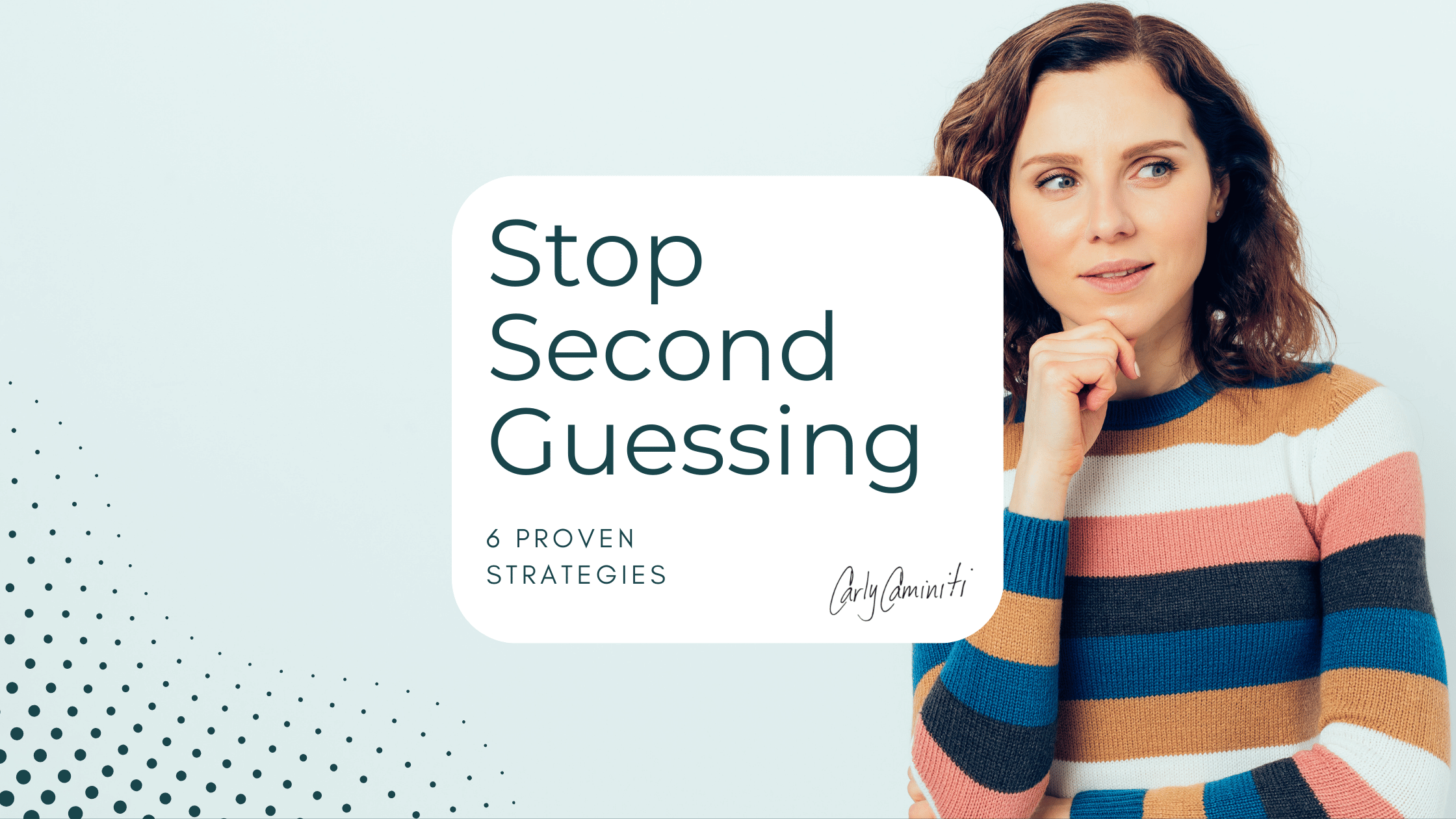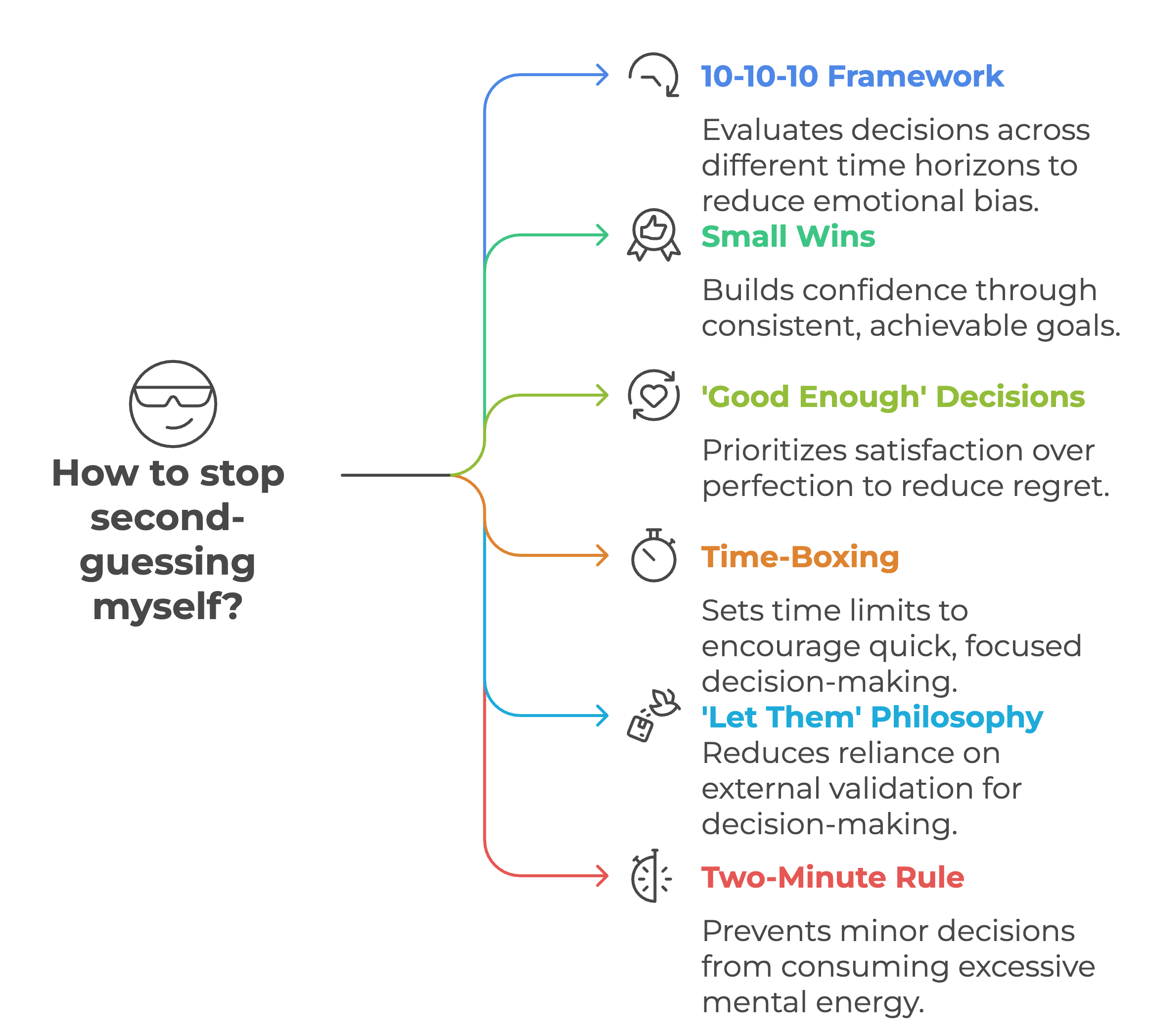How to Stop Second-Guessing Yourself [6 Proven Strategies]
If overthinking every decision is draining your energy and confidence, you’re not alone—and you’re not stuck. Second-guessing isn’t just annoying, it’s a pattern that quietly erodes your ability to lead, grow, and trust yourself. In this article, you’ll uncover six research-backed strategies that help high-achievers stop spiraling in indecision and start making confident choices again.
Ready to stop circling around “what if”? Book a complimentary transformation call to explore how coaching can help you shift this cycle for good.
Also Read:
Table of Contents
TL;DR
Second-guessing is a deeply rooted cognitive pattern that undermines confidence and decision-making. Research shows it’s tied to both neural processes and perfectionistic tendencies. If you’re stuck in a loop of self-doubt, there are proven ways to break free. From cognitive reframing tools like the 10-10-10 framework to behavioral shifts like satisficing and small-win tracking, this article offers practical methods to rewire how you approach decisions and build self-trust without needing to get everything perfect.
Key Points
Second-guessing is often neurological and linked to post-decision sensory processing and residual uncertainty.
Chronic indecision negatively affects mental health and contributes to anxiety, depression, and underperformance.
The 10-10-10 framework shifts decision perspective by applying time-based reflection: 10 minutes, 10 months, 10 years.
Building small daily wins boosts confidence and builds a trackable record of competent decisions.
Adopting a satisficing mindset (“good enough”) reduces decision regret and improves life satisfaction.
Time-boxing forces intentionality and limits overthinking by assigning strict windows for decision-making.
The “Let Them” philosophy helps reduce external validation seeking and keeps decisions rooted in personal values.
The two-minute rule minimizes energy wasted on minor decisions and builds confidence through momentum.
Understanding the Psychology Behind Second-Guessing
Why Our Brains Are Wired to Second-Guess
Your tendency to second-guess yourself isn't a character flaw—it's actually hardwired into your neural circuitry. Recent breakthrough research reveals that graded neural activity in your brain maintains ongoing evaluation even after you've made a choice. This degree of uncertainty persists at the neural level, particularly in the parietal cortex, meaning your brain is literally designed to keep questioning decisions.
Scientists have discovered an even more fascinating layer to this puzzle. Studies in mice found that absence of the Arc gene eliminated behaviors associated with second-guessing, indicating a possible genetic foundation for these cognitive patterns. This genetic basis suggests that your propensity for reconsidering choices may be evolutionarily beneficial, originally helping our ancestors survive by constantly reassessing potentially dangerous situations.
Your brain doesn't just randomly second-guess decisions either. Research shows that your subsequent doubts are informed by residual sensory evidence not used in your initial choice. Rather than making random guesses, your mind maintains access to "non-winning" evidence, allowing for revised judgments after you've already decided. This means when you experience second thoughts feelings of doubt, your brain is actually processing additional information that wasn't fully considered the first time around.
The complexity deepens when you consider how your brain integrates multiple information sources. Advanced research demonstrates that combining neural signals and external context enables more accurate prediction of decision accuracy. Your brain constantly monitors various sources of evidence, supporting flexible reassessment in complex situations.
The Cost of Chronic Self-Doubt on Mental Health and Performance
The psychological toll of persistent second-guessing extends far beyond momentary indecision. Recent mental health screening data reveals that 54% of individuals at risk for a mental health condition cited low self-esteem or self-image as a primary concern in 2024, with this number rising to 61% among youth under 18. This connection between self-doubt and broader mental health challenges isn't coincidental.
Current statistics paint a concerning picture of how widespread these struggles have become. 12.1% of U.S. adults in 2024 reported experiencing regular feelings of worry, nervousness, or anxiety, while 4.8% reported regular feelings of depression—both conditions commonly associated with persistent self-doubt and decision difficulties.
The impact becomes even more pronounced among younger populations. 31.9% of teens were estimated to have an anxiety disorder in 2023, with severe impairment affecting 8.3% of these cases. Anxiety disorders frequently manifest as decision paralysis, creating a cycle where the fear of making wrong choices leads to avoiding choices altogether.
Perhaps most alarming is the finding that 88.6% of young adults reported three or more major signs of severe mental distress in 2023, well above the treatment threshold. Indecision and self-doubt were frequently cited as contributing factors to this widespread psychological distress.
The performance implications are equally serious. Chronic self-doubt doesn't just affect your emotional well-being—it creates tangible obstacles in your daily functioning. Untreated depression, closely linked with chronic self-doubt and indecision, can lead to trouble performing at school, social withdrawal, and increased risk of more severe mental health complications.
6 Evidence-Based Strategies to Stop Second-Guessing Yourself
Strategy 1: The 10-10-10 Decision Framework
The 10-10-10 decision framework provides a structured approach that naturally reduces second-guessing by expanding your perspective beyond immediate anxiety. This method involves evaluating any decision based on how you'll feel about it in 10 minutes, 10 months, and 10 years. By considering these different time horizons, you shift focus from emotional reactivity to broader consequences, reducing the bias that often fuels persistent doubt.
This framework proves particularly effective for everyday decisions that tend to generate disproportionate worry. When you're second-guessing yourself about a social commitment or work project, asking how this choice will matter across different time frames often reveals that your current anxiety is misaligned with the actual long-term significance of the decision.
The power of this approach lies in its ability to break the cycle of endless analysis. Instead of getting caught in loops of "what if" scenarios, you create clear parameters for evaluation. Most decisions that generate significant second-guessing lose their emotional charge when viewed through the lens of how they'll matter in a decade.
Strategy 2: Build Confidence Through Small Wins
Building decision confidence requires consistent evidence that your judgment is trustworthy. This process begins with creating daily confidence-building habits that reinforce your sense of capability. Research shows that consistent small achievements foster a sense of competence and trust in your own judgment, creating a foundation of self-efficacy that supports more challenging decisions.
Creating Daily Confidence-Building Habits
The key to sustainable confidence building lies in establishing routines that provide regular evidence of your competence. Establishing specific, actionable goals and creating clear implementation plans increases the likelihood of success, particularly when integrated into structured daily schedules. These don't need to be major accomplishments—simple commitments like completing a morning routine, finishing a work task within a set timeframe, or following through on social plans can provide powerful reinforcement.
Attaching new habits to existing routines and leveraging time-based cues helps foster automaticity and maintain consistency. This approach builds on your existing successful patterns rather than requiring entirely new behavioral structures. When you consistently follow through on small commitments, you create psychological evidence that you can trust your decisions and follow through on your choices.
Tracking Your Decision Success Rate
Monitoring your decision outcomes provides tangible evidence to counteract negative self-talk and doubt. Using mobile apps, wearables, or digital platforms to record behaviors enables automatic tracking, progress visualization, and immediate feedback. This objective record of your successes helps combat the tendency to focus primarily on mistakes or uncertain outcomes.
The process of tracking itself creates awareness of your actual success rate versus your perceived failure rate. Most people who struggle with second-guessing significantly underestimate their decision accuracy, focusing disproportionately on the small percentage of choices that didn't work out perfectly. Regular tracking provides concrete evidence of your competence.
Utilizing immediate, descriptive feedback and incorporating rewards—whether virtual badges or intrinsic satisfaction—reinforces positive decision-making behavior and motivates continued engagement. This feedback loop helps retrain your brain to recognize and celebrate successful choices rather than dismissing them as luck or accidents.
Strategy 3: Master the Art of 'Good Enough' Decisions
The research on satisficing versus maximizing reveals powerful insights about decision confidence and life satisfaction. Individuals who prioritize "good enough" choices experience less post-decision regret and are less likely to feel overwhelmed or paralyzed by options compared to perfectionistic maximizers. This difference occurs because satisficers set reasonable thresholds and feel content once those are met, rather than endlessly searching for optimal choices.
The efficiency benefits of satisficing extend beyond emotional well-being. People who satisfice can make decisions more quickly, freeing up time and mental energy for other important tasks. This efficiency proves particularly valuable in environments with uncertainty or rapidly changing information, where exhaustive optimization becomes impractical and potentially counterproductive.
Perhaps most compelling is the research showing that satisficers report higher happiness and life satisfaction compared to maximizers. Multiple studies demonstrate that satisficers enjoy greater satisfaction with their choices and overall well-being, while maximizers are more likely to experience indecision, procrastination, and lower optimism due to anxiety about missing better options.
The contrast becomes even more pronounced when examining broader life outcomes. Self-reported maximizers display less behavioral coping and are more frequently associated with negative outcomes, including increased neuroticism and inability to follow effective decision strategies. Interventions that foster satisficing approaches correlate with improved outcomes across multiple life domains.
These findings indicate that adopting satisficing approaches can enhance decision quality, reduce psychological burdens, and improve life satisfaction, especially for everyday choices. Maximizing may only be beneficial for a small subset of high-impact decisions where the cost of a suboptimal choice is exceptionally high.
Strategy 4: Use Time-Boxing for Decision Making
Time-boxing creates artificial but helpful constraints that prevent endless deliberation and encourage commitment to choices. This technique involves allocating a specific amount of time to make a decision, then moving forward with your best option when that time expires. The approach works because it forces you to prioritize essential factors while limiting the influence of overthinking.
For minor decisions, consider implementing very short time boxes—perhaps two to five minutes for routine choices like what to wear or where to eat lunch. Medium-stakes decisions might warrant 30 minutes to an hour of consideration, while major life choices could reasonably receive several days or weeks of focused thought, but with clear endpoints.
The psychological benefit of time-boxing extends beyond efficiency. When you know you have limited time to decide, your brain naturally focuses on the most important factors rather than getting lost in peripheral concerns. This constraint paradoxically leads to better decisions by forcing you to identify what truly matters.
Strategy 5: Practice the 'Let Them' Philosophy for External Validation
The 'Let Them' philosophy, popularized by Mel Robbins, represents a scientifically grounded mindset shift for reducing the drive for external validation and regaining personal agency. This approach involves releasing the need to control others' perceptions or seek constant approval, allowing you to make decisions based on your own values and judgment rather than anticipated reactions from others.
This philosophy proves particularly powerful for strengthening emotional boundaries in relationships. By embracing "Let Them," you stop micromanaging or trying to fix others, protecting your own mental health and preventing codependent tendencies that often fuel second-guessing in relationship decisions. When you're not constantly trying to predict and control others' responses, your decision-making becomes clearer and more authentic.
The approach also provides crucial protection against social comparison, especially in our hyperconnected digital age. Experts highlight how the philosophy curbs the harmful effects of comparison, a major source of external validation seeking that drives persistent self-doubt. When you allow others to make their choices without feeling threatened or competitive, your own decision-making becomes more centered and confident.
From a neurological perspective, the theory encourages a pause before reacting to external triggers, aligning with findings that the brain's fight-or-flight reflex undermines logic and emotional regulation. This strategic recalibration toward what you can control—your own choices and boundaries—reduces the anxiety that often accompanies decision-making.
Strategy 6: Implement the Two-Minute Rule for Minor Decisions
The two-minute rule for minor decisions creates a powerful habit that prevents small choices from consuming disproportionate mental energy. This approach involves setting a brief time limit for low-stakes decisions, then committing to whatever choice emerges within that timeframe. The technique works because it prevents minor decisions from escalating into major internal debates.
Examples of decisions that benefit from the two-minute rule include choosing what to eat for lunch, selecting which route to take to work, deciding what to watch on streaming services, or picking an outfit for casual occasions. These choices rarely have significant long-term consequences, yet they can consume substantial mental resources when subjected to extensive analysis.
The cumulative effect of implementing this rule extends far beyond time savings. When you consistently make quick decisions about minor matters, you build general decision-making confidence and free up cognitive resources for choices that genuinely deserve more attention. This practice also helps you develop better instincts about which decisions warrant careful consideration versus which can be resolved quickly.
Conclusion
Second-guessing doesn’t mean you’re broken; it means your brain is working overtime to protect you. But that protection can backfire when it leaves you stuck, overwhelmed, and doubting your ability to move forward. The tools in this article aren’t just mental hacks; they’re lifelines to a more self-trusting, empowered version of you.
Want support applying these strategies to your real-life challenges? Book a free transformation call with Carly. You don’t have to figure this out alone.







